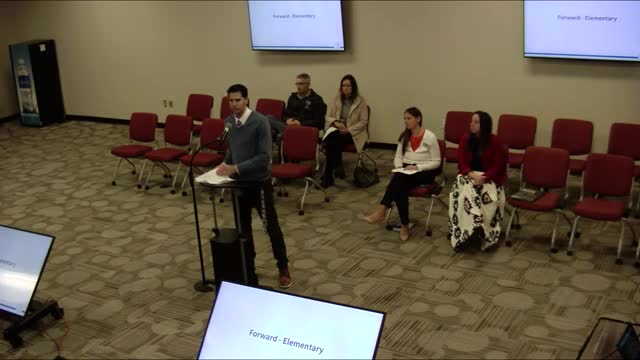Major changes to FORD exam spark debate on student performance
November 12, 2024 | New Berlin School District, School Districts, Wisconsin
This article was created by AI summarizing key points discussed. AI makes mistakes, so for full details and context, please refer to the video of the full meeting. Please report any errors so we can fix them. Report an error »

In a recent government meeting, significant changes to the FORD exam were discussed, highlighting a new scoring system and updated performance levels for English Language Arts (ELA) and math. The Department of Public Instruction (DPI) has implemented a revised cut score, with ELA scores now starting at 1560, a shift from the previous 570. This change is part of a broader realignment to educational standards from 2020 and 2021, emphasizing greater number sense and deeper algebra understanding in math, while simplifying ELA assessments by reducing the number of required essays.
The meeting underscored the challenges of comparing current student performance to previous years due to these changes. DPI has categorized this year as \"year 1\" for the new test, meaning that comparisons will be more meaningful in subsequent years. Despite the scoring adjustments, data indicated that many third graders showed growth in ELA even before the cut score change, with nearly 80% of students meeting or exceeding expectations in social studies and science, where cut scores remained unchanged.
The discussion also touched on the performance of specific student subgroups, including students with disabilities and English language learners. Notably, students with disabilities demonstrated significant growth in both ELA and math. However, some grade levels did not show improvement despite the new scoring system, prompting school officials to focus on these areas in future assessments.
As the district continues to analyze performance data, it aims to align its curriculum with the updated standards and improve student outcomes. The meeting concluded with a commitment to ongoing evaluation and collaboration with neighboring districts to share successful strategies and address challenges in student performance.
The meeting underscored the challenges of comparing current student performance to previous years due to these changes. DPI has categorized this year as \"year 1\" for the new test, meaning that comparisons will be more meaningful in subsequent years. Despite the scoring adjustments, data indicated that many third graders showed growth in ELA even before the cut score change, with nearly 80% of students meeting or exceeding expectations in social studies and science, where cut scores remained unchanged.
The discussion also touched on the performance of specific student subgroups, including students with disabilities and English language learners. Notably, students with disabilities demonstrated significant growth in both ELA and math. However, some grade levels did not show improvement despite the new scoring system, prompting school officials to focus on these areas in future assessments.
As the district continues to analyze performance data, it aims to align its curriculum with the updated standards and improve student outcomes. The meeting concluded with a commitment to ongoing evaluation and collaboration with neighboring districts to share successful strategies and address challenges in student performance.
View full meeting
This article is based on a recent meeting—watch the full video and explore the complete transcript for deeper insights into the discussion.
View full meeting
